After an encouraging first run, direct routes between Newark (EWR) and Newcastle, England (NCL) will reopen lines to the bucolic north of England next summer. Once again, one of Europe’s more underrated corners will be injected with added convenience, and curious and opportunistic travelers will respond by etching new travel memories in the “best part of England.”
To the rest, let me say that the Lake District, drivable from Newcastle, is extraordinary. Here, country inns and pubs and lake cruise operators are good business in the summer, and year-round, the land inspires a humility now found in some of history’s best-regarded artistic works. Newcastle, for its part, services the area with a surprising sophistication. Its pubs flow bitter, lager and IPA and wear their ages well—some even with Michelin recognition.
Here’s the north as I found it, through the lens of 15 images:
Far from London @golakes @LakeDistrictPR pic.twitter.com/FveehdM6cb
— Ian Livingston (@iantlivingston) June 24, 2015
1. Far from London
Minutes after my feet touched the jetbridge at Newcastle International Airport, I was whizzing down the motorway away toward Lake Windermere, which was to be my basecamp in the Lake District. Driver Peter from LA Taxis supplied me lift and assistance with the British road system (M roads, A roads, B roads, etc.), which I immediately sought from my passenger seat. Jetlag took this opportunity to collapse my brain in full, and I did not absorb much.
The first hour and a half or so of the drive was a grey, jetlagged blur of Ms and As and painted asphalt. Occasionally, there were roundabouts, like victory laps celebrating my arrival in England. Then, we crossed into England’s Lake District, UNESCO World Heritage Site, and the tired, urban landscape fell away. The roads became narrower (B-class roads?) and windier. The natural world began to rush into view, as if we were accelerating backward in time, and the woods rose up around us. We passed Ullswater and I asked to stop to take the photo above, and the roads began to incline (to degrees that warranted road signs). At Kirkstone Pass, high in the whistling sky, I looked out the open window upon the full expanse of the Lake District, upon land shaped by glaciers and natural forces—not by men.
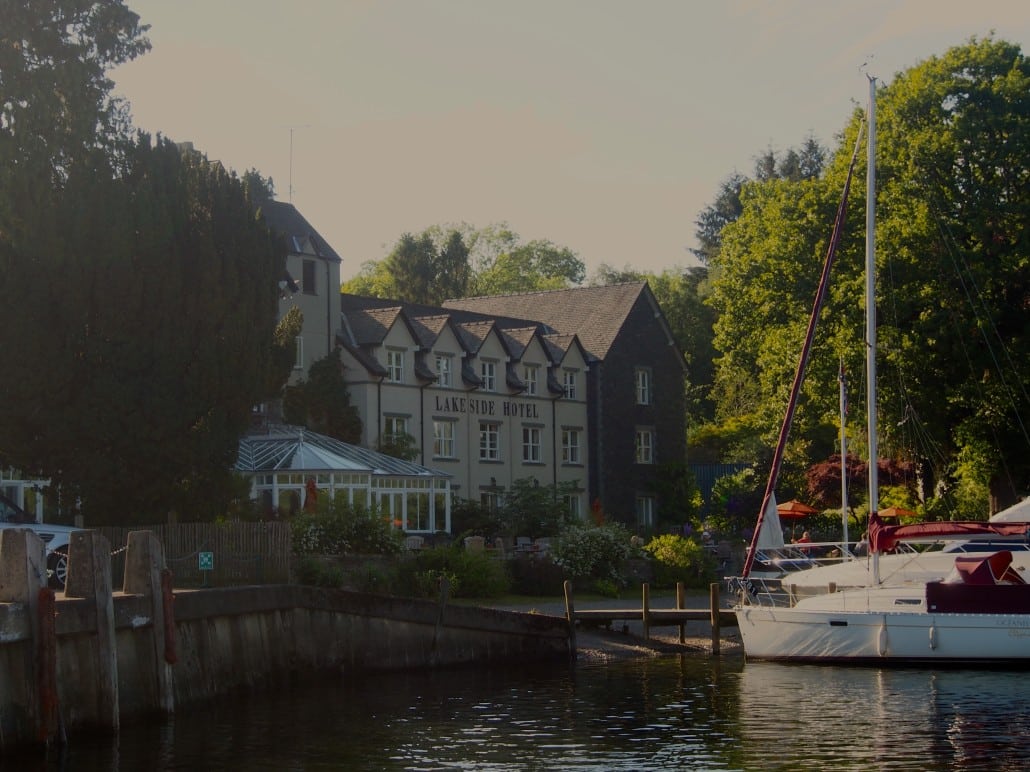
2. Lakeside Hotel & Spa in Lake Windermere
Lake Windermere is both a town and England’s largest lake, and the four-star Lakeside Hotel & Spa is literally on that lake. Check-in is a minute’s walk from the “Lakeside” boarding platform serving Windermere Lake Cruises, the key to a whole lot of area worth exploring. Above, from a boat, the hotel appears rustic and romantically British.
In fact, the Lakeside Hotel is an indulgence in luxuries of times past (besides the free Wi-Fi). The aging aesthetic in my lakeview room and the old-library feel of the place would not survive in a Jumeirah, but they accent the perfect Lake District escape. Consider: My bed—fluffy white and cooled by lake air—was as comfortable as any I’ve slept in. Before each dinner, I was offered time on the veranda with the menu and a brandy, scotch or glass of wine, and after dinner, I made selections from a cheese cart of embarrassing riches. The pool was beautiful, and the spa—which I did not experience—is renowned.
For dinner, I strongly suggest the “Lamb Three Ways.” Rates start at £199/night.
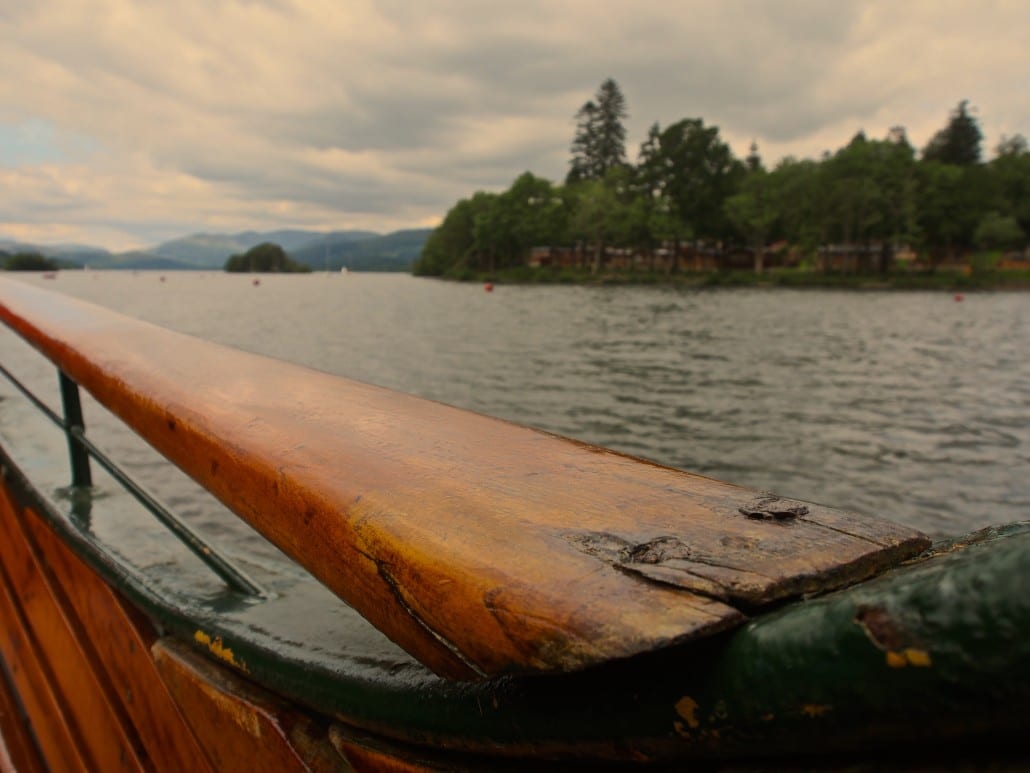
3. On Lake Windermere
A “Freedom of the Lake” ticket (£19) grants you unlimited Windermere Lake Cruises sailings for a day. Getting out on England’s largest lake is a restorative hour-and-a-half if you roundtrip from Lakeside and back without hopping off. With a full-day ticket, however, it’s worth exploring beyond the shores. In addition to Lakeside (beside the Lakeside Hotel), Windermere boats also call at Bowness (30 min) and Ambleside (45 min). I stopped at Ambleside.
Wrapped in a crinkled windbreaker, I squinted through the sun and stepped off my boat at Ambleside Pier. I was 45 minutes and a full lake away from my hotel, which I’d loved and already left for the day. No regrets. Ambleside is now the foreground in one of my most vivid Lake District memories: a small, lakeside town beneath great earthy-green peaks and clouds swirling above, with a disproportional number of places to buy ice cream. The English love ice cream.
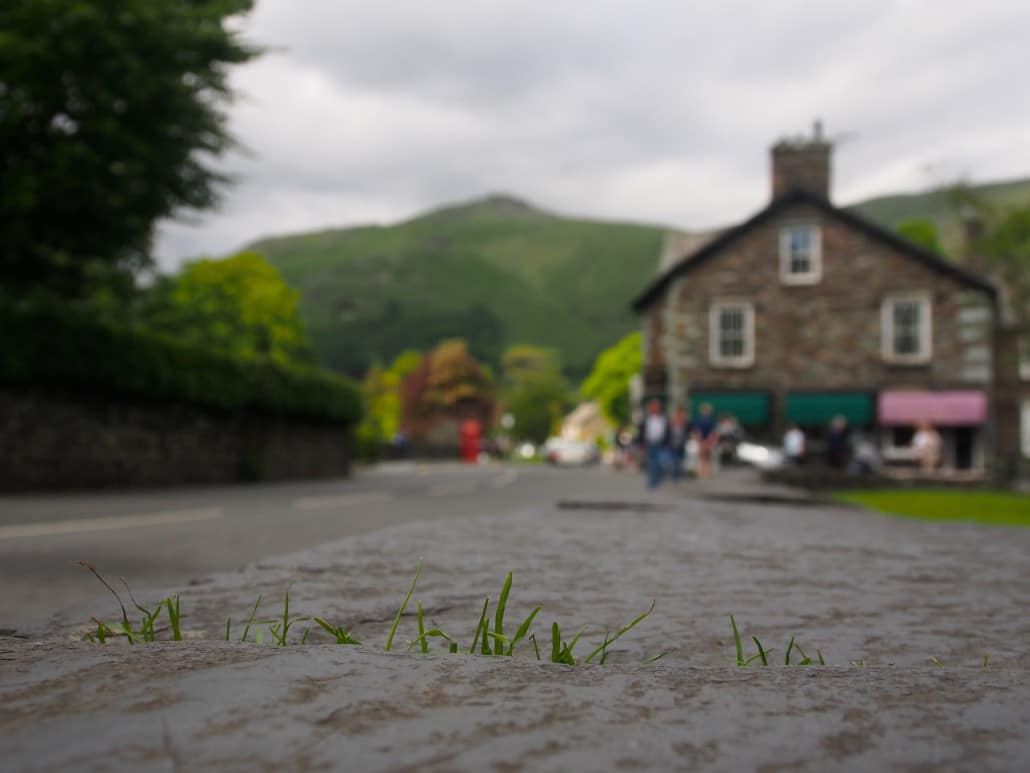
4. Grasmere
Ambleside also served as my gateway—via the 599 bus—to the town of Grasmere, which I was determined to visit. Grasmere is most famous as the home of romantic poet William Wordsworth, who remarked that the town was “the loveliest spot that man hath ever found.” To my eyes, Wordsworth may have been right: The town is small and cozy, insulated by mountains and lake, charming without many guests to charm. It’s also the home of the world’s first gingerbread…
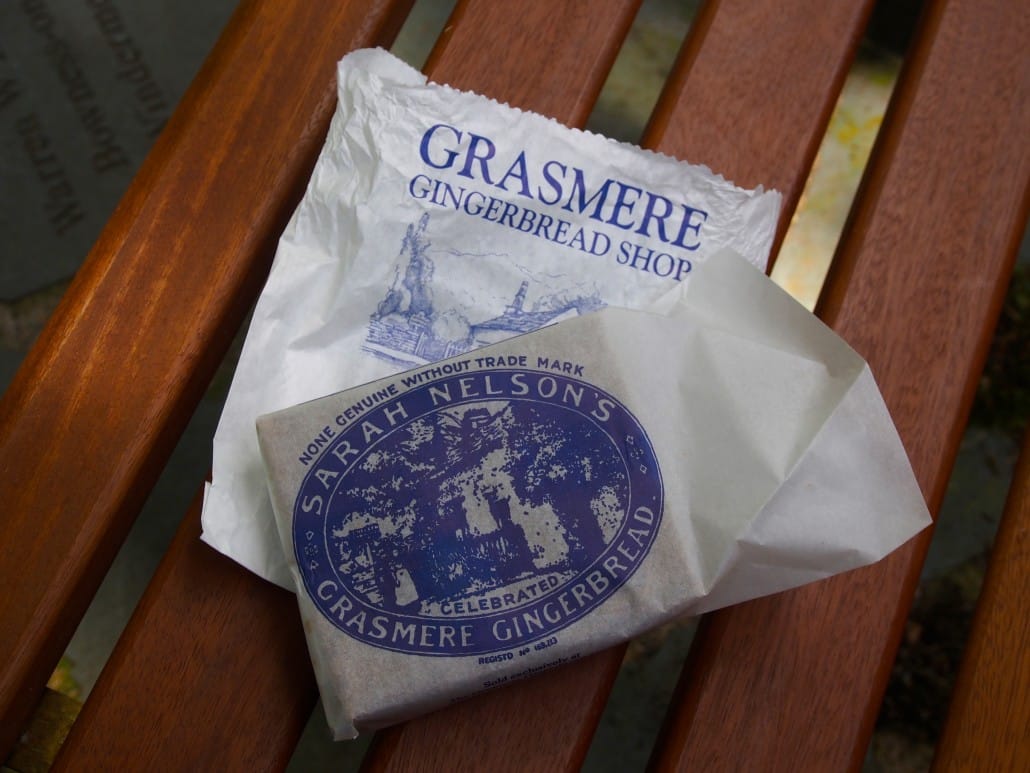
5. World’s first gingerbread
Gingerbread in its most traditional variety was invented in 1854 in Grasmere by a woman named Sarah Nelson, a chef in the Victorian mold. More than a century-and-a-half later, that same pioneering gingerbread recipe is still coming hot out of the oven at Sarah Nelson’s Grasmere Gingerbread. Pick up a few pieces in the tiny shop and marvel at the operation, which at the time of my visit had two women in Victorian dress emotionlessly slinging gingerbread rectangles from a tiny room. I devoured my rectangles just steps away from Wordsworth’s resting place in a disarming moment of tranquility.
I’m not sure what I expected from the gingerbread itself, but I have to say I really loved it. Just don’t wait more than 24 hours to eat it after purchase.
Tip: In the 24-hour window, said a new friend at the Lakeside Hotel, try giving a piece of gingerbread 30 seconds of heat in a microwave and top it with ice cream.
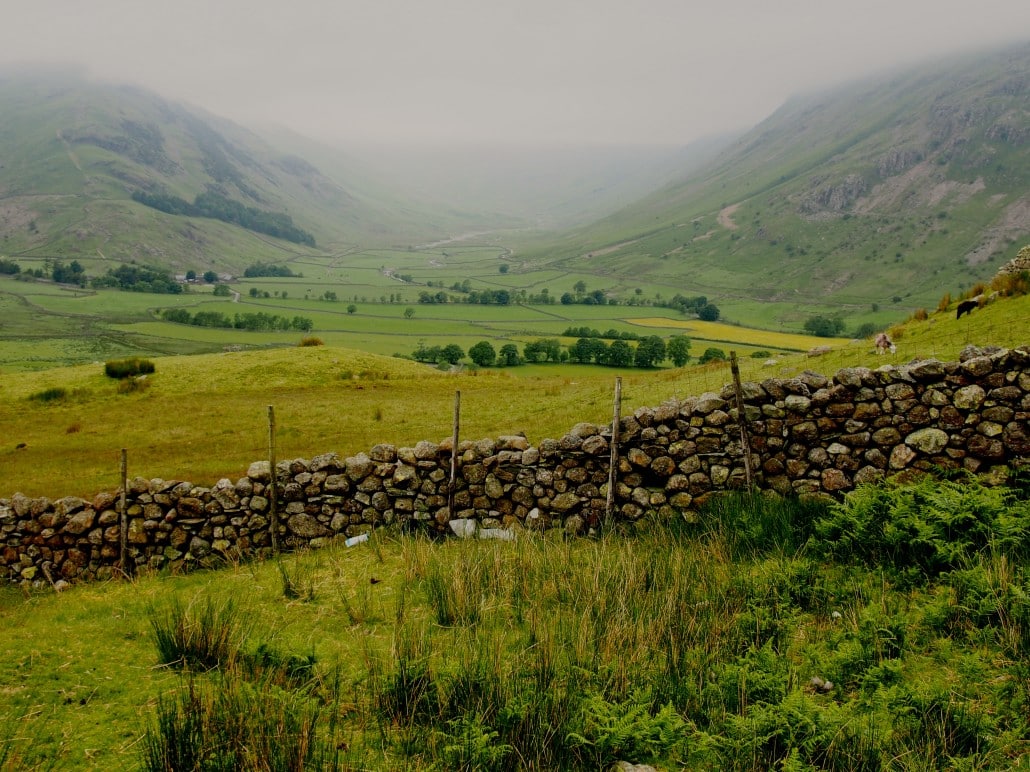
6. The Lake District!
The Lake District stretches wide and far, high and low, with a beauty unique to its geography. Atop dramatic terrain, a patchwork of healthy greens, yellow-greens and emeralds races up into the clouds and back down again into deep valleys sliced with stone walls. The air is heavy with the history here, of knights and poets and common people and more stone walls. Lined end to end, I was told, all the stone walls in the Lake District could reach Australia.
On my High Adventure tour of the area with The Mountain Goat, my guide Mark estimated that 98% of these stone walls were thrown up between 1750 and 1802, when the land was divided up in accordance with a new tax structure. The good ones, he told us, were engineered to grow more compact when they receive force and still today can withstand the impact of a collision with a car.
Above, this shot of the Langdale Valley captures the strange calm of this stony place. Many such shots followed.

7. “Britain’s most beautiful view”
So it has been declared. On my High Adventure tour with The Mountain Goat, a stop at this most revered spot—overlooking Wastwater, England’s deepest lake (260 feet)—was a highlight. Standup paddleboarders took to the lake during our stop. Scaffell Pike, England’s highest mountain sits on the fringe, compounding the visual extremes at play.
A couple on my full-day tour confirmed what seemed to be common wisdom: that the High Adventure and the Ten Lakes Spectacular (£39 and full days, each) on back-to-back days together cover the major jewels of the Lake District.
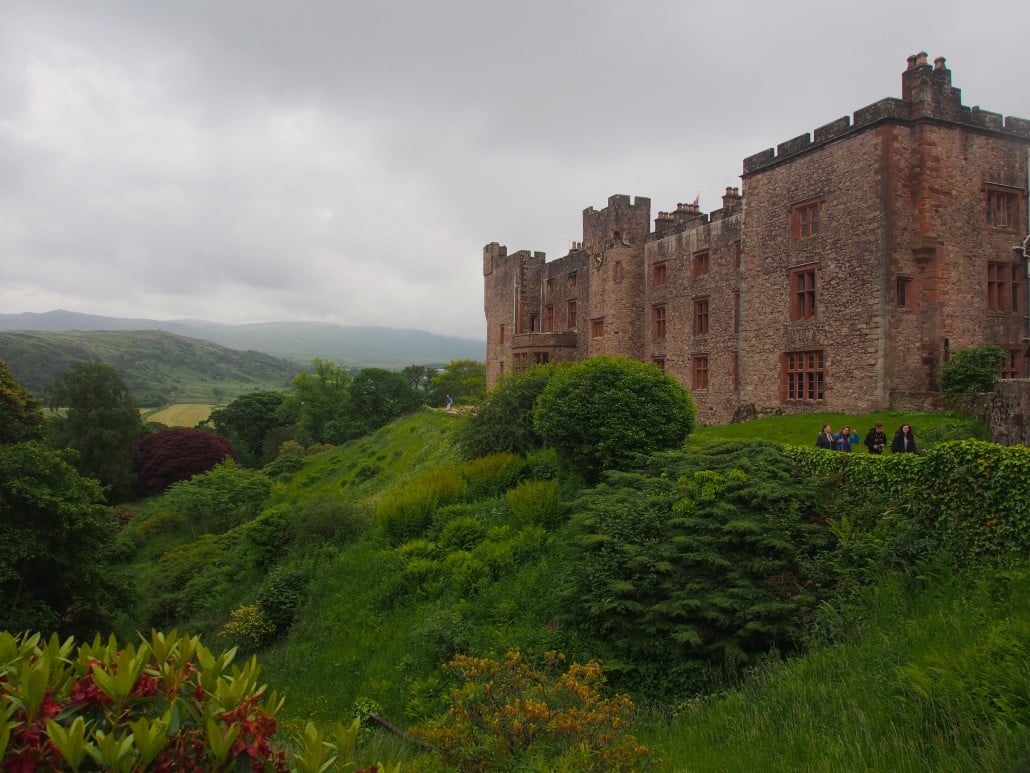
8. Muncaster
The High Adventure tour also included a stop at Muncaster, a supposedly haunted castle whose inhabiting family moved in back in 1208. In England, people still live in castles. This one—technically Cumbria Castle—costs £2 to enter.
We were given a solid hour to explore inside (which I declined to do in favor of eating a jacket potato), walk the grounds and gardens, and catch the free birds of prey show, which included responsive flying by a vulture, peregrine falcon and kookaburra.
https://instagram.com/p/4XH62JH_dK
9. Hadrian’s Wall at Houseteads
The north of England is UNESCO-rich, at least relative to its scale. One of its crown jewels is Hadrian’s Wall (part of the Frontiers of the Roman Empire UNESCO inscription), the remains of which run in parallel with the route between the Lake District and Newcastle. Near the height of the Roman Empire, under Hadrian, the wall stood strong as the empire’s northwest perimeter, almost 1500 miles from Rome. Construction began in AD 122 and took 15 years to complete. Turreted “milecastles,” manned by watchful Romans, provided cerebral safeguard every mile.
Driving, you can route yourself up for a visit to any number of wall sites (here are six top places to see the wall). By rail, which I rode on my return to Newcastle, you can disembark at Haltwhistle, between Carlisle and Newcastle, for an easy excursion to Housesteads, arguably the best preserved and most engaging section of wall remaining. The connecting AD122 bus (see first year of construction above) picks up and drops off right outside the Haltwhistle station.
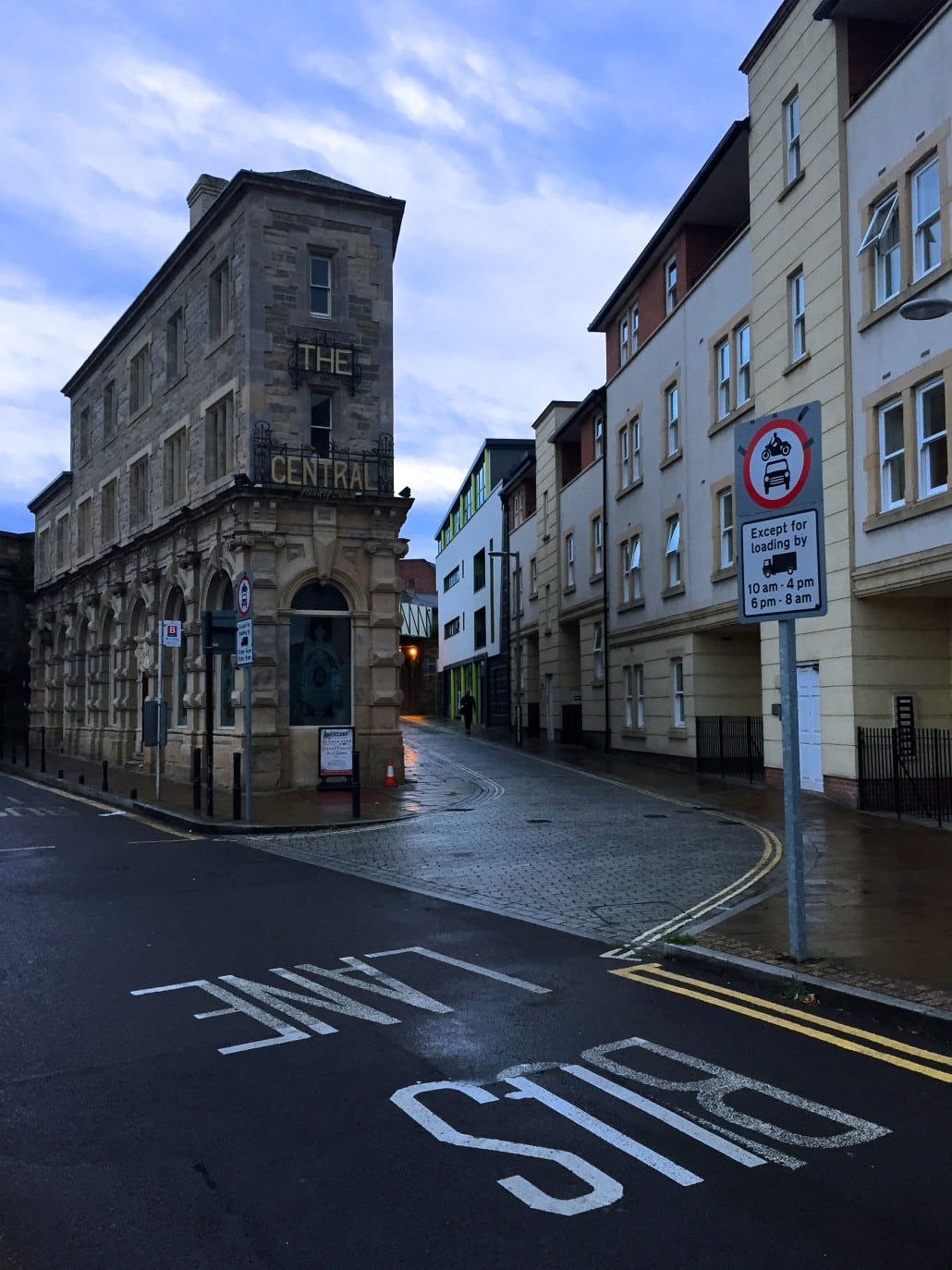
10. The Central: an iconic pub
Newcastle has earned a reputation around Europe for its nightlife. Hen and stag parties (bachelorette and bachelor parties) from London and beyond run wild on the weekends, but in Newcastle, I wanted to drink pints, at pubs—the sort of pubs where the walls are old and the brass handpull taps are old and the mythology treads in drunk, political intrigue.
The Central, reborn in 2010 in a 150-year-old building, is not that old by British standards, but inside, it serves handpulled bitters and lagers the way I hoped it would, to be put back barside or in its defining, trapezoidal front room. There’s also a gorgeous room dedicated to whiskies (and previously, the societal elite), and a rooftop terrace.
The Central is in Gateshead (the Brooklyn to Newcastle’s Manhattan, lazily), across any of seven immediate bridges (four walkable) from Newcastle. Walking over the Tyne at night back to the Malmaison Newcastle was nice.
Leading me across the river for beer was Alastair Gilmour, a noted local beer expert (he runs a beer magazine called Cheers) and a wonderful guy. I joined Alastair on a curtailed running of his private pub walking tour and under his direction, we drank inspired pints at other great pubs, too. The Crown Posada, for example: Newcastle’s narrow, second-oldest pub (1818) that has stained-glass windows, frescos under the wallpaper and the glow of the captain’s quarters on an old, candlelit merchant ship.

11. Meat Plank at The Bridge Tavern
Also on the Alastair beer tour of Newcastle-Gateshead was The Bridge Tavern, a two-story beer palace sitting in pointed juxtaposition with the other well-aged pubs we saw. Through the taps of The Bridge Tavern flow the best beers of the moment from all across the world, and even an impressive IPA from the area: Jakehead IPA. Its take on pub food yields the likes of the Meat Plank above: a slab of wood packed to capacity with “Pressed duck & pistachio terrine, grilled sausage, pig’s head croquette, potted ham, sourdough toast [and] pickle.” The place offered on my visit, genuinely, an amazing meal in an amazing, creative space—built securely into the foot of the Tyne Bridge.
The name of its predecessor—The Newcastle Arms—is still lettered across its front in gold. Removing it, in the eyes of the owners, would be cultural vandalism, and so the place remains the best spot I found in Newcastle under a veil of light secrecy. Make sure to check out the patio upstairs, woven into the bridge’s engineering and hidden from the street.
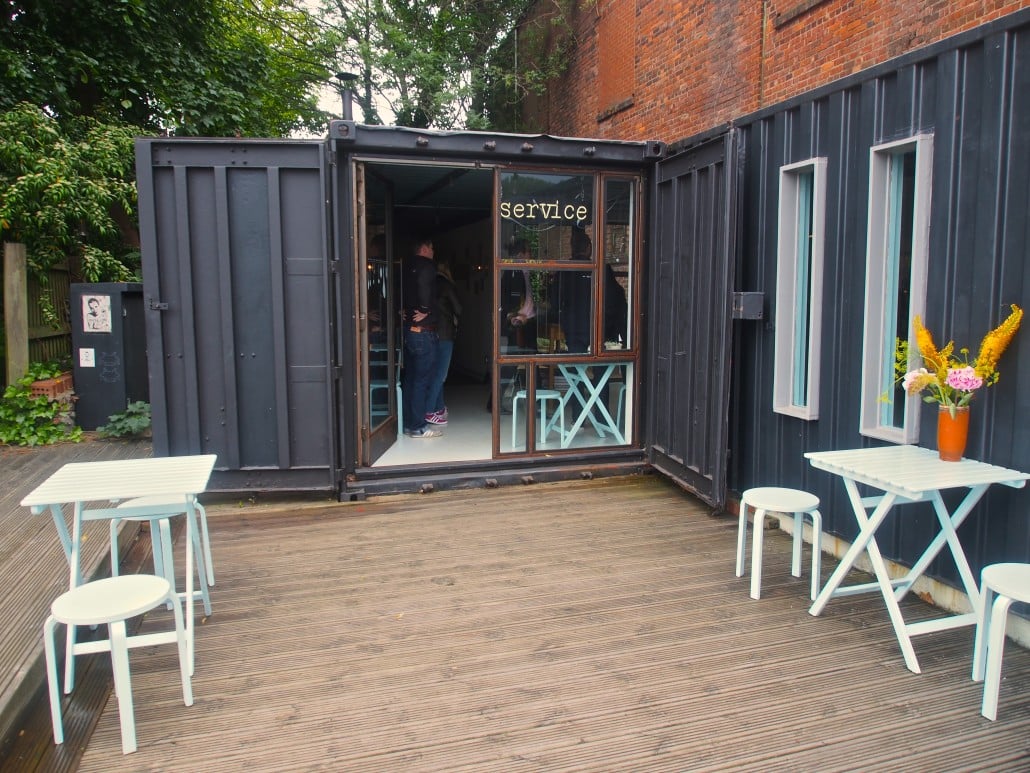
12. Spotlight on the Ouseburn Valley
Cook House, pictured above, is a restaurant set in two black shipping containers. In fact, in all categories and by all metrics it’s a very successful and impressive restaurant, having been named one of the five best restaurants in the UK for 2015. It just happens to be set in two black shipping containers—and in Newcastle’s Ouseburn Valley.
The life-giving Ouseburn is a tributary of the relatively mighty Tyne, and for years, the corner of Newcastle it cuts through—called the Ouseburn Valley—did nothing to serve the aesthetics, nor cultural health, of greater Newcastle. Today, it is rising from the ashes. In the past two decades, the Ouseburn Trust has spearheaded a revival effort now positioning the Ouseburn Valley as a place of lively, explosive, sometimes-grungy growth. The old brick warehouses of its industrial past now house the imaginations of the young creatives who’ve moved in. The Tyne, long one of Newcastle’s best pubs and a legendary music venue (live music 365 nights of the year), has new patrons, the likes of whom are leveraging the Ouseburn Valley’s story to rise to the top of their fields. Like Cook House’s Anna Hedworth.
Following Clive blindly down @Victoria_Tunnel in @altweet_pet. No ghosts seen. pic.twitter.com/PVdZFo0vxQ
— Ian Livingston (@iantlivingston) June 26, 2015
13. Clive in the Victoria Tunnel
Also in the Ouseburn Valley: the Victoria Tunnel, where hundreds hid during WWII. It’s also Newcastle’s number-one attraction. Tours are available and spooky for one portion.
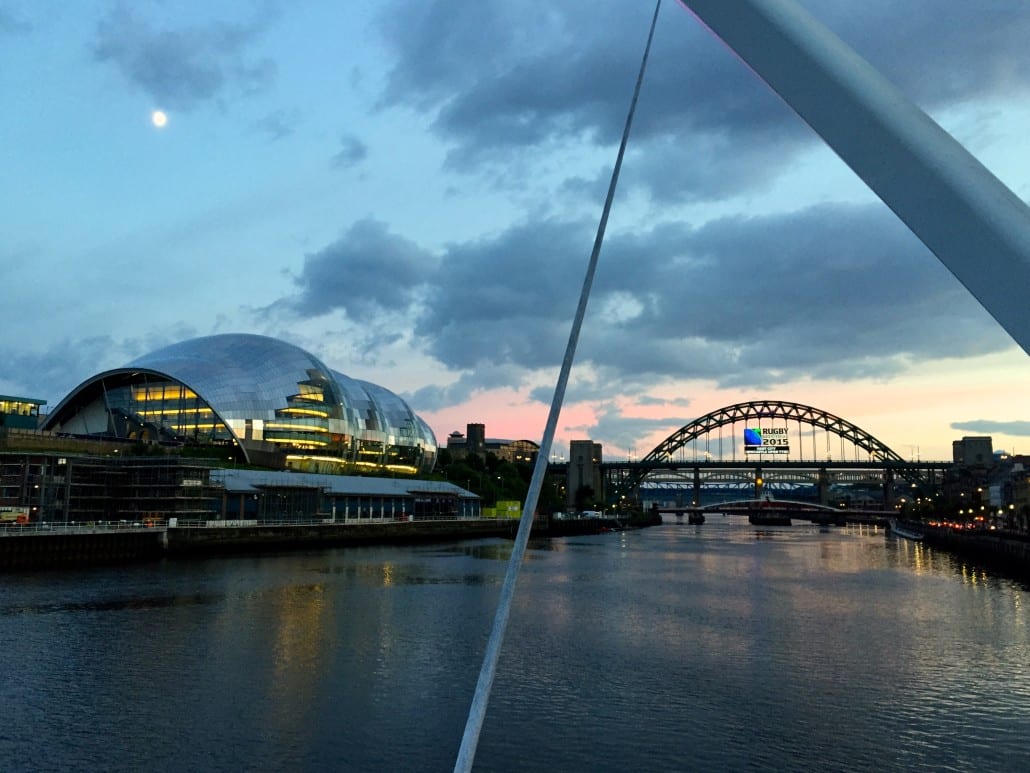
14. Dusk on the Tyne
Officially, Newcastle is Newcastle upon Tyne. That is outstanding as a British proper noun, and it is also a nod to the River Tyne, which cuts between Newcastle and neighboring Gateshead. The Tyne and its rich banks provide ample opportunity for photographers, as well as for open-minded Newcastle visitors to revisit their impressions of the city.
In the left of the photo, the marvelous silver lump of modern design is the Sage, designed by Sir Normal Foster, and it’s the talk of everyone you’ll encounter within sight of it. Supposedly, the acoustics inside are among the best in the world, a fact not reflected in its name, which is merely the return for the £11 million (allegedly) chipped in by the Sage Group. James Brown, Morrissey, Explosions in the Sky and, truly, many others have played it. I can only speak to its visuals, but man, they are good visuals (especially at night).
The Tyne Bridge, straight on in the photo, is one of seven that cross the river within city limits. Its familiar aesthetic is no coincidence; Mott, Hay and Anderson, the firm that designed the Sydney Harbour Bridge, helped bring it to life back in 1928.
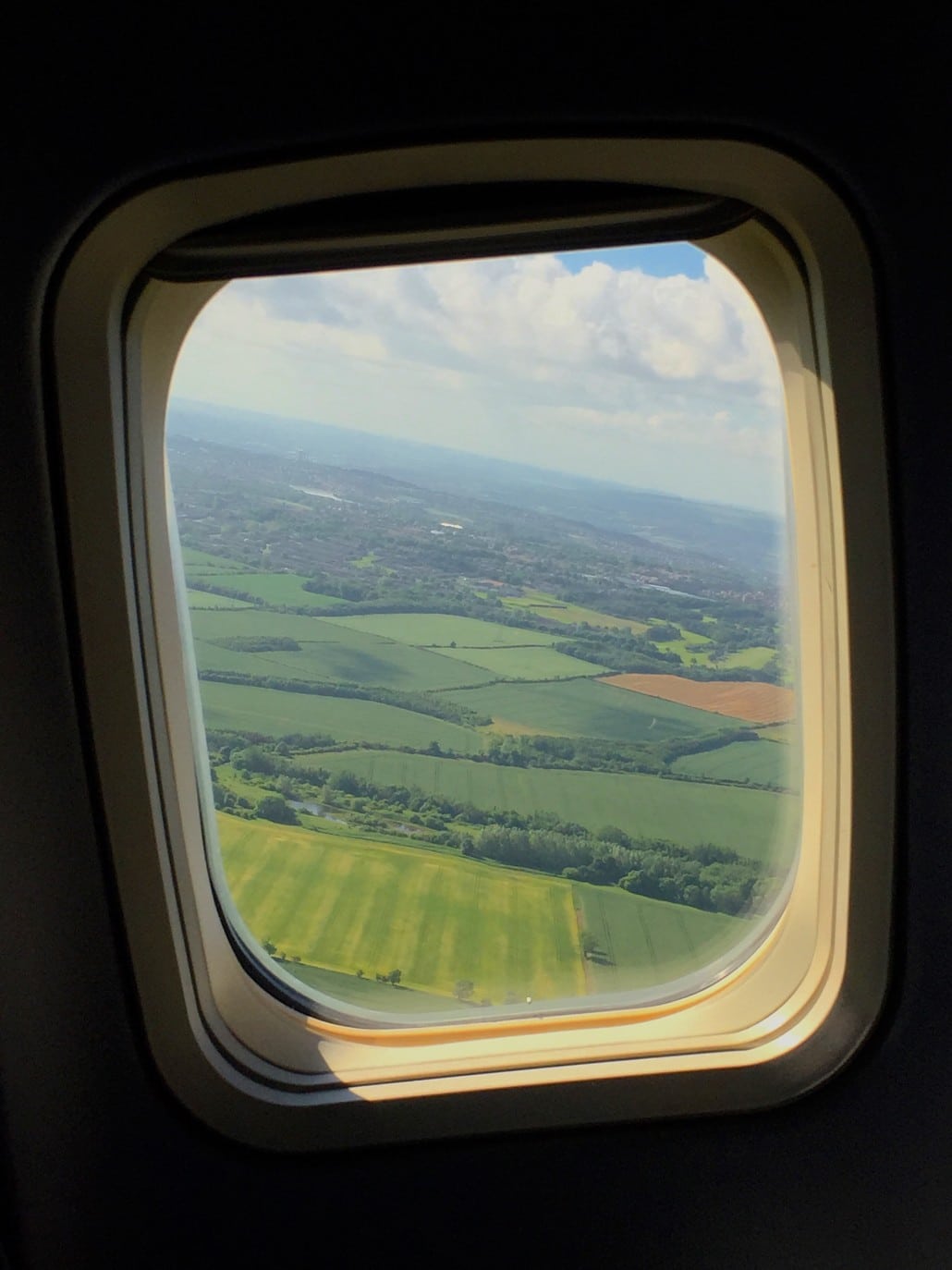
15. Arriving at NCL
This summer—and next summer, starting May 26, 2016—you can fly direct from Newark to Newcastle. You’ll feel what you’ll feel about Newcastle, but travel actualization awaits all first-time guests of the Lake District it pivots to. It’s extraordinary.
Descending into Newcastle International Airport (NCL), I saw green, light green, darker green, red (?) through my United Airlines window, a palette consistent with the vibrant world then ahead of me. Next summer, I hope I’ll be back.







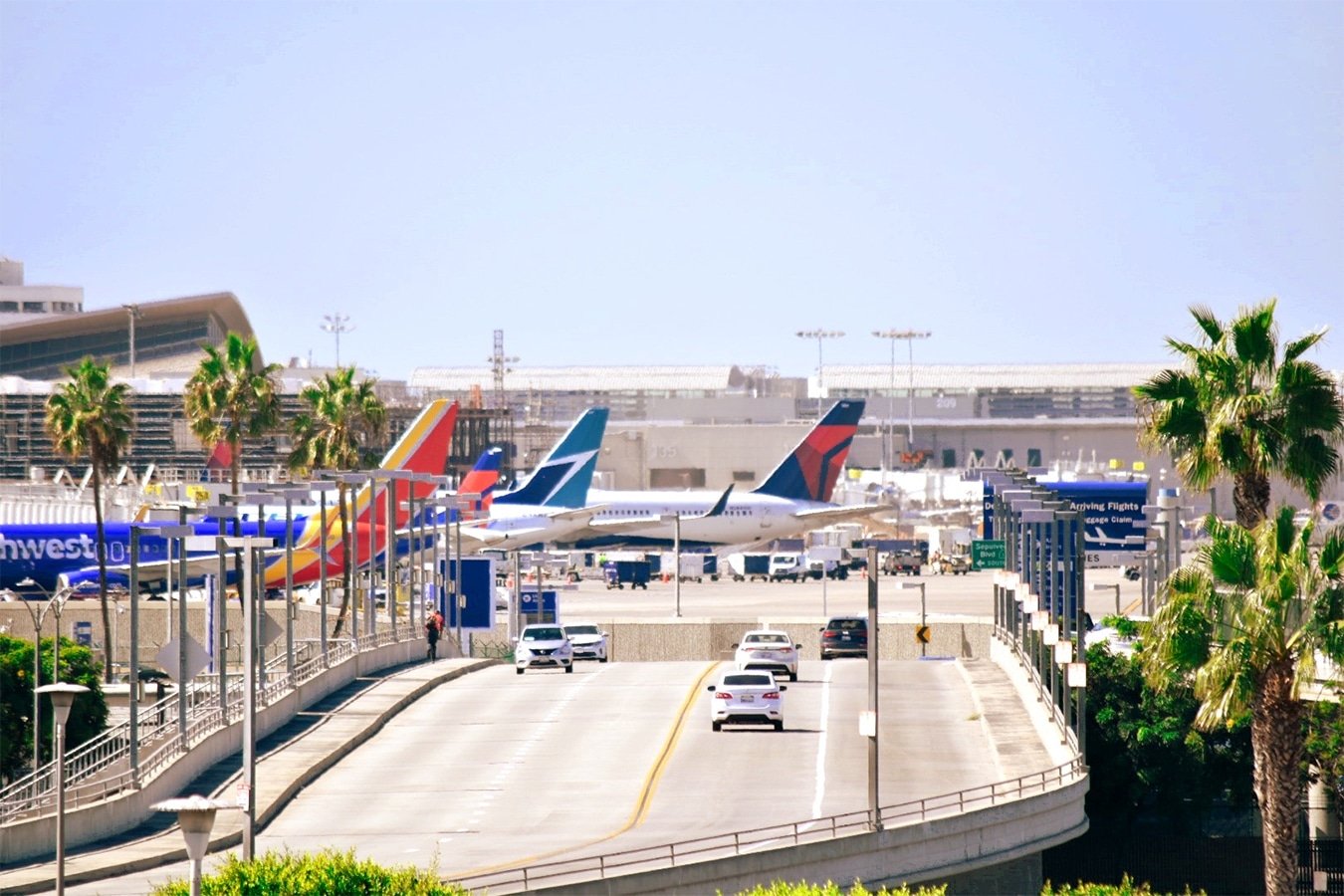
Such a beautiful scenes.
Thanks, Pamela!